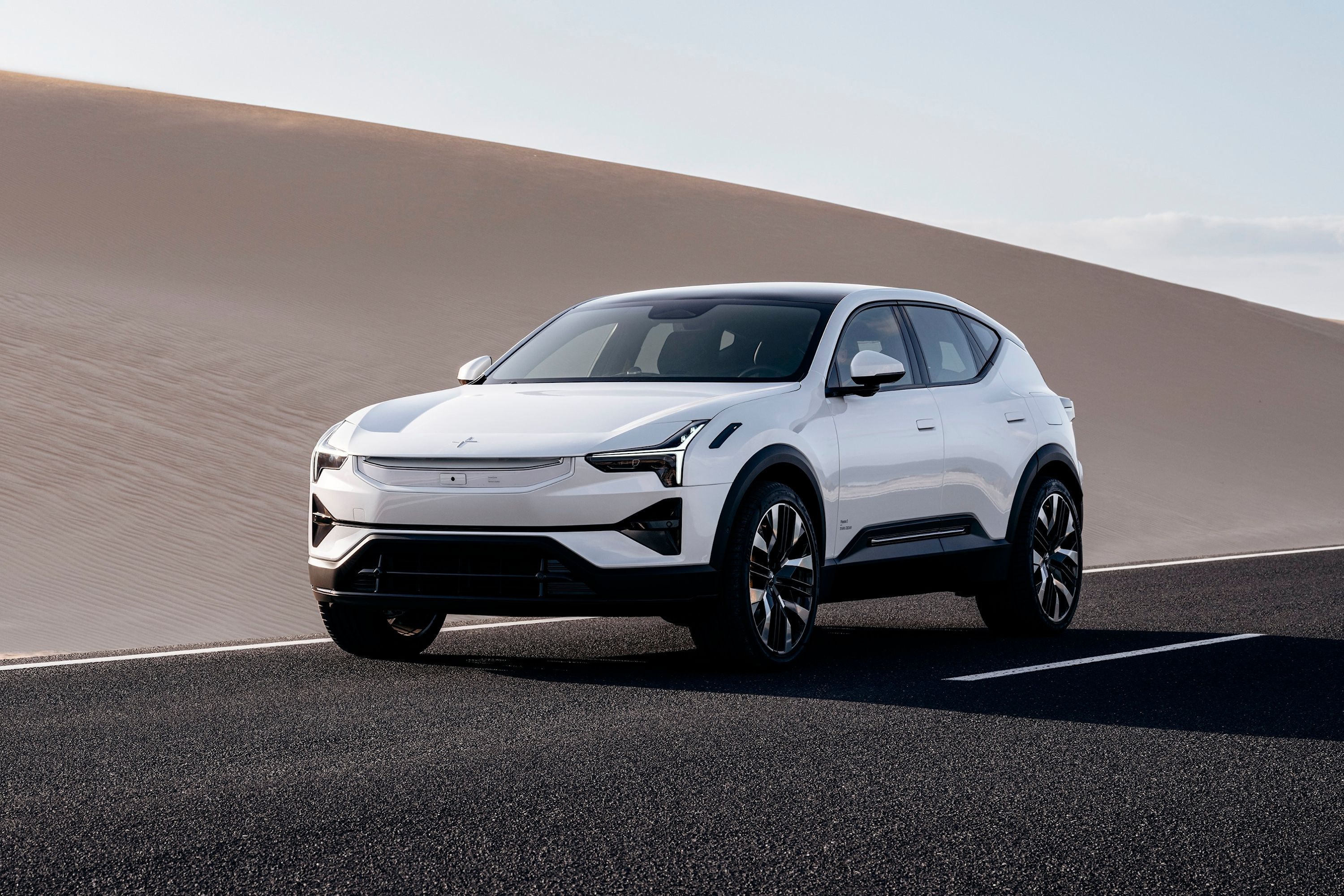
For over a year, Polestar has been laying out the pieces that'll make up the Polestar 3.
After months of teasing the SUV, the electric car aimed right at the Porsche Cayenne is finally here. It debuts with the design language we first saw previewed in the Polestar Precept Concept, which will appear as the Polestar 5 in 2024.
But we're here to talk about the SUV, not the oh-so-pretty coupe. Headline figures are impressive. It produces up to 517 horsepower and 671 lb-ft of torque in its top spec.
It'll also ride on the SPA 2 platform, just like Volvo's EX90, but it's the first model to be built by Polestar from the jump. That, rather obviously, makes it a car the brand won't want to mess with. We've seen Polestar struggle to push the volume of larger automakers, and breaking into the luxury SUV segment in this manner could seriously help the brand out. The tech should help, too, with the Precept's SmartZone making an appearance here.
SmartZone is the piece that replaces the combustion car's grille on Polestar models. It's a heated panel housing much of the car's advanced driving systems (ADAS) and safety sensors in one place. Here, it includes a heated radar module and camera and several front-facing sensors, like those for parking distance control.
Tech is a bit of a talking point on this car. Polestar says that collaborations with companies like Zenseact, Luminar, and Smart should give the 3 phenomenally seamless ADAS system integration. Additionally, Polestar now uses an NVIDIA Drive core computer, which acts as the car's "AI brain," running software from Volvo. It will process data from the car's multiple sensors (five radar modules and five cameras) to enable advanced driver-assistance safety features and monitoring.
Bleeding-edge technology is also present in the Polestar 3's safety systems, with some of Volvo's latest safety assets making their way into the car. It includes the rear occupancy detection system, which debuted in the EX90. It will pick up sub-millimeter movements, letting you know if anything- or anyone- has been left behind. That system links with the climate control system to prevent heatstroke and hypothermia.
Let's continue our tech tour of the Polestar 3 inside, where Smart Eye has been added to a Polestar for the first time. The system is led by two closed-loop (so Big Brother can't watch) cameras that track your eyes to monitor awareness levels. It can trigger warning messages, sounds, and an emergency stop function when it detects you're not paying attention.
The infotainment will be familiar to those who have sat in a Polestar 2, using the same Google interface on a 14.5-inch center display arranged vertically. Polestar will use a new Snapdragon Cockpit Platform to help deliver "high-definition displays, premium quality surround sound, and seamless connectivity throughout the vehicle."
While we're on the subject of what's inside the car, we should take a minute to address sustainability, which Polestar has made a priority with both the car's materials and its production, which will also take place in the US for the first time. Indoors, the leather is animal welfare-certified, and the wool is fully traceable. Once in production, Polestar will conduct a life-cycle assessment (LCA) on the 3; it and future reviews will work to find ways to constantly reduce the car's carbon footprint.
Let's talk performance. The 3 comes with a dual-motor configuration, which is rear-biased. The base car will make a healthy 489 hp and 620 lb-ft of torque. The optional Performance pack ups that to a hilarious 517 hp and 671 lb-ft of torque. That will also add performance optimization for the dual-chamber air suspension, special 22-inch wheels, and the brand's signature Swedish Gold accents on the belts, brake calipers, and other places. The dual-chamber setup is a special one, and it can adjust its damping rates every two milliseconds.
Polestar includes adjustable one-pedal drive and an electronic torque-vectoring function on the rear axle. The brand says this is something it has developed from the Polestar 1. The rear "axle" can also be disconnected to save some range.
That leaves us with the battery. It's a 111 kWh unit, which Polestar says hits 379 miles of range on Europe's WLTP cycle. We imagine we'll have EPA results soon. The unit has a prismatic cell design housed in a protective aluminum case with steel reinforcement and liquid cooling. Polestar includes a heat pump as standard, and ambient heating is used for climate and battery preconditioning. Finally, the car will come equipped with bi-directional charging.
Polestar has intentionally kept options light, favoring a higher level of standard equipment to simplify production logistics. All cars get air suspension, a full-length glass roof, LED lighting, retractable door handles, and staggered 21-inch wheels. For the first model year, the Plus and Pilot Packs are standard. Those net you luxury features like a 25-speaker Bowers & Wilkins audio system, soft-close doors, a head-up display, and Pilot Assist, Polestar's driver assistance software.
The Pilot Pack will also be available in the second quarter of 2023. It will add LiDAR from Luminar, an additional NVIDIA control unit, three cameras, four ultrasonic sensors, and clearance for the front and rear cameras to provide real-time data about the car's surroundings. Polestar says this will help prepare the vehicle for autonomous driving capabilities.
Production starts at Volvo's facility in Chengdu, China, this year. From there, Volvo's new Ridgeville, South Carolina facility will produce the cars by the middle of 2024. This is likely due to President Biden's new EV tax rebate structures, which state cars must be made in part in America to qualify.
The Polestar 3 Long-Range Dual Motor will start at $85,300 per Polestar's website or $89,900 with the Performance Pack. You can order one now on Polestar's website, with deliveries starting in Q4 2023.
